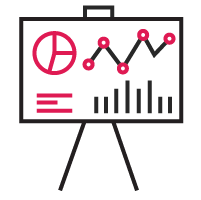Overview With a rich suite of API tools, this Silicon Valley-based Cprime client is a…
Case Study
Utility Company’s Agile Transformation Results in 30% Improvement and Reduced Overhead
Company Details
Industry: Utilities
Company Size: 28,000 Employees
Location: U.S. and United Kingdom (headquartered in U.K.)
Products: Electricity and natural gas
Cprime Services:
Executive Summary
Long cycle times and waterfall methodology hindered this utility company’s efforts to respond to change in the market and produce consistent value for customers with evolving needs. Cprime was called in to pilot a new Agile way of working within the back-end infrastructure division with excellent results.

Overview

With that idea in mind, the organization embarked on a pilot program in 2019 to incorporate agile methodologies into the division responsible for IT infrastructure solutions for their entire back office. This is a vital support system for running their business.
And, Cprime was there to help.
The Challenge
Historically, while they produced consistent results for the organization, the division struggled with long cycle times and process complications that hindered their ability to derive full value from their efforts. It was difficult for them to respond to an increasing rate of change, resulting in poor morale, low quality, growing technical debt, and late delivery.
Cycle times
Long cycle times resulted in very hard-to-manage projects, so there was a lot of inefficiency and waste. Likewise, waterfall methods at this scale incur tremendous risk for most of the time the project is active while only providing value at the very end. As a result, customers didn’t see value delivered when they needed it.
So, reducing cycle times and getting each project to completion as quickly and efficiently as possible was essential to success.
Hardware vs software
It’s important to note here that applying agile methodologies to infrastructure and hardware is quite different from the traditional software development use case. The most significant difference between them is that it’s impossible to derive value incrementally in a hardware context. Generally speaking, every improvement made before the final cut-over to activate the new upgraded system is an “enabler” in agile terms. The customer value only comes at the final cut-over. Examples are designs, cable installation, device configuration, and installation, all of which are required before the device is brought online.
But, that doesn’t mean that the incremental nature of agile processes wasn’t beneficial in a hardware context. In fact, although the very first installation managed in the pilot program went faster than its predecessors under the waterfall methodology, the process really started to speed up after several iterations. This success is attributed to the frequent retrospectives, which gave the team the opportunity to routinely identify ways to improve throughout the process rather than just once at the end of a long waterfall project.
Vendor contracts
Another significant issue that stood in the way of a more effective development process was the company’s long-standing relationship with third-party vendors that handled all the infrastructure implementation work.
Under the existing contracts, they defined success by the production of a predefined deliverable. Penalties were in place for deviating from the plan and for upsetting strict timelines. On paper, this should have ensured the teams accomplished work on time and on budget, but the reality was that the vendor’s priorities routinely created a roadblock to agility. Since the vendor’s pay was contingent on delivering what they initially agreed upon, they naturally resisted any opportunity to pivot for the sake of accommodating the customer or emerging conditions.
Budget process

Before this initiative, they built the sanctioning process around individual projects, some of which could take years to reach completion. In those cases, they didn’t recoup the costs for years. Once the sanctioning authority approved a budget, it was difficult to adjust priorities, and doing so took a lot of time. As a result, pivoting based on new information or reprioritizing to increase value was difficult without running into immediate budgetary concerns.
Solution
Beginning early in 2019, a Cprime consultant in the U.S. worked with division leadership and an independent consultant in the U.K. to start planning their agile transformation and implementing agile ways of working in various small projects. Over the next 18 months, they provided extensive training and process optimization across five infrastructure teams and, in March 2020, launched the first official Agile Release Train (ART), which is the basis of the following results:
SAFe
They quickly determined that SAFe was the proper framework to support the coordination of five interdependent teams that needed to run on the same delivery cadence. It made sense to do big room planning with all these teams and track their dependencies, so they created the ART and unified the teams’ activities using a single backlog and Planning Increment (PI) schedule.
Additionally, the SAFe framework extends beyond the infrastructure teams themselves to support true business agility. This was a vital piece of the puzzle because an effective solution needed to affect the budgetary process and the relationship with vendors. And, the solution had to scale if and when the pilot program succeeded.
As noted above, applying SAFe principles to infrastructure instead of software development required some creative problem solving and flexibility, but the final solution proved highly effective.
Training

In February of 2019, leadership received SAFe training to assist with planning and rollout of the initial agile ways of working. After several earmarked projects kicked off under brand new agile programs, the consultants trained 50 people using the interactive Scrum Master and SAFe training programs in December of 2019.
Process and contract recommendations
To further support this agile transformation, the consultants also dug into existing processes to identify roadblocks to agility and recommend solutions to overcome these challenges.
One significant aspect of the resulting solution was identifying the most efficient process for each typical infrastructure project — from wiring a WiFi router to replacing a server — and creating duplicatable epics and stories that could be easily cloned and redeployed every time they scheduled the project. Once they completed this work, through relentless improvement during each sprint retrospective, they refined the process for each technology at every sprint. The planning and execution of repeatable projects became like a well-oiled machine or assembly line process, which dramatically improved speed and quality.
There were also dramatic improvements to the contract with the implementation vendor. The customer altered the relationship and agreement from a focus on deliverables to a time-and-materials arrangement to support agility. This allowed the vendor’s and company’s team members to collaborate more effectively to deliver the most value to the customer rather than following a premade plan at all costs.
With agile methodologies in place, the sanctioning process could be detached from individual projects and, instead, be linked to more consolidated portfolios of agile initiatives. The program’s success ensures that the company will be moving to a consolidated sanctioning process going forward. This means sanctioning only needs to occur once a year for each ART, while the portfolio maintains the flexibility internally to allocate and prioritize the budget as required to maximize value.
Results
In short, the results of these efforts were phenomenal.
The agile teams drastically improved cycle times over teams who were still running traditionally. For example, the pilot program successfully upgraded 50 sites in just 12 months. Or, roughly, a 30% improvement in productivity due to reduced cycle times.
The customer dramatically streamlined non-delivery processes, and consolidated 70 projects to just three, eliminating the overhead for the excess projects. And, perhaps most importantly, the customer received markedly greater value faster — a vital component of every successful agile transformation.
As an added benefit, many of the team members noted improved morale, greater employee engagement, and other less tangible improvements. One stated, “this is the best team I’ve ever been on!”
Going forward
The success of the pilot program has inspired the infrastructure division to implement the same agile transformation across all portfolios in the U.S. and U.K. over the next year. Doing so will require working with and training all the vendors across territories, training hundreds of employees and vendor representatives, and reworking budgeting arrangements across the board.
We’re thrilled to be working with the client to make this dream a reality.
Interested in similar results for your organization? Explore our flexible Agile transformation solutions.
About Cprime
Cprime is an industry-leading, full-service global consulting firm with a focus on providing integrated and innovative solutions around digital transformation, product, cloud, and technology. With over 20 years’ experience, we provide strategic and technical expertise to businesses across more than 50 industries. Our team of advisors and technical experts have the know-how to meet organizations where they are to develop actionable solutions and solve business challenges. We also collaborate with our expansive network of partners to design, deploy, and harmonize technology stacks across organizations. Our mission is to empower visionary business leaders and teams to reimagine the future of work to achieve better outcomes.
Want to share with a colleague? Download the PDF
